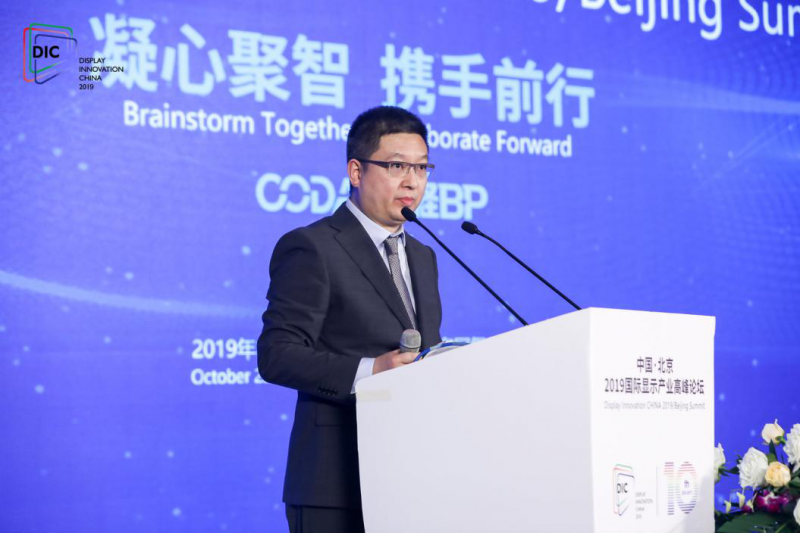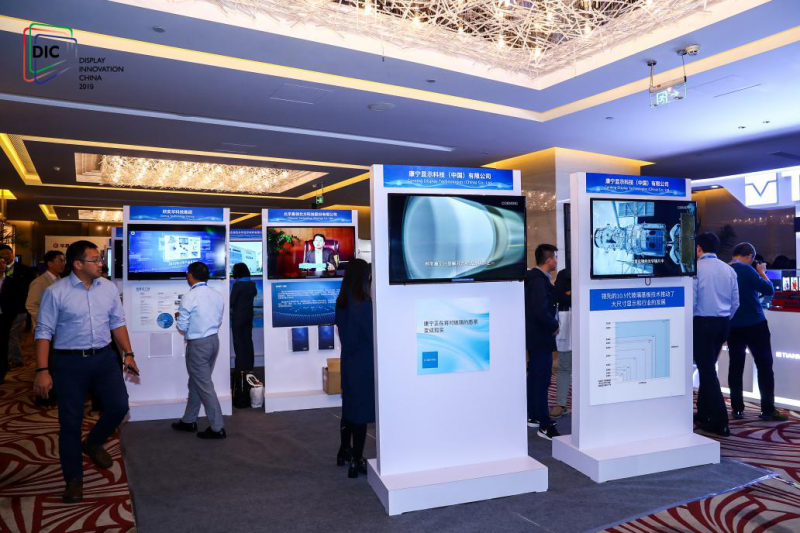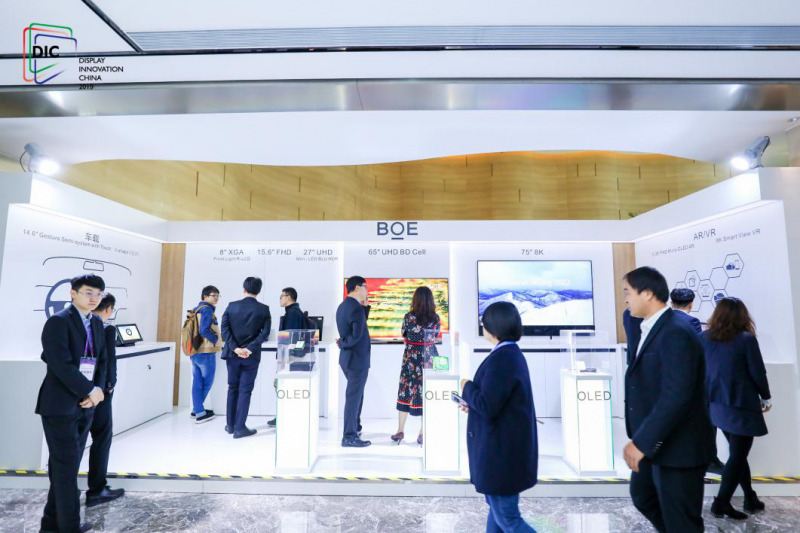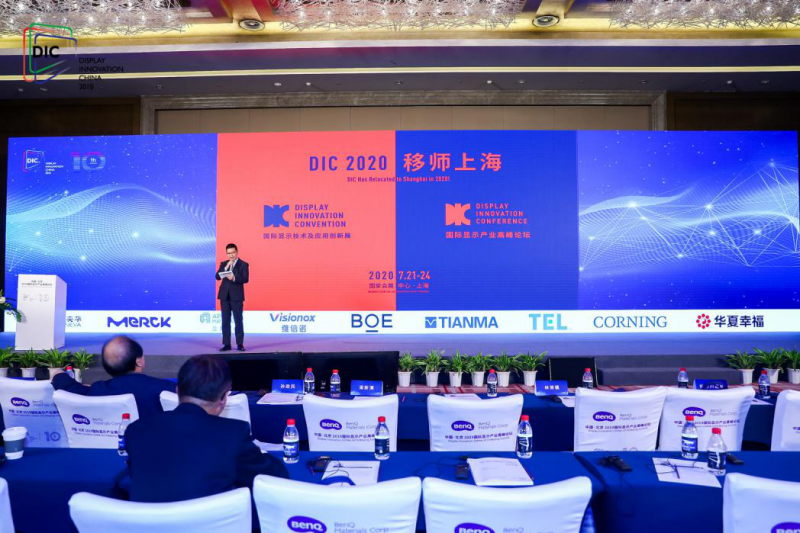As the year 2020 enters, people around the world are experiencing the test of the novel coronavirus, economic globalization is facing unprecedented challenges, and the restructuring of industrial chains is becoming increasingly urgent. If there is a word to describe the situation we face, there is no better word than uncertainty.

Hu Chunming, Executive Deputy Secretary-General of LCD Branch of China Optical Optoelectronics Industry Association
What is "uncertainty" is a "black swan event" in which changes in the future are no longer linear or regular and cannot be predicted based on past trends. Since the beginning of the 21st century, black swan events with uncertainties have occurred repeatedly, such as the 9.11 attacks in 2001, the snow disaster in China in 2008, the European debt crisis in 2009, the Brexit in 2016, and the China-Us trade war in 2018. With the passage of time, "uncertainty" is constantly bringing some leap changes to the world we live in, profoundly affecting human production, life and even survival.
The COVID-19 pandemic is the first "uncertainty" the world has encountered since 2020, and its impact is beyond imagination. Nearly 2.5 million people have been infected and 200,000 have died in 206 countries or territories. In the three months from December 20, 2019 to March 20, 2020, global stock markets have suffered $24 trillion in wealth losses, equivalent to the total GDP of the United States in a year.
Previously, a new round of scientific and technological revolution and industrial transformation, with the new generation of information and communication technology (ICT) as the general technology, is emerging vigorously and accelerating its evolution across the globe. New business models such as sharing economy, platform economy and smart economy are emerging one after another, exerting a long-term and profound impact on technological innovation, economic growth and institutional change in countries around the world. As the ICT sector is typically capital-intensive and technology-intensive, and the impact of COVID-19 on business and consumer confidence is relatively high, the impact of COVID-19 on the ICT sector is greater than that of other manufacturing industries. Of course, the impact of COVID-19 on the ICT industry is not evenly distributed. The rule is that the impact on end products is greater than that on devices and materials. The impact on traditional markets is greater than on emerging markets; The impact on hardware is greater than the impact on software. According to the relevant association's data, the output value of the global traditional ICT market is forecast to decline by 12.3% in 2020, while the output value of the display industry will decline by less than 2%.
Display device is an important port to realize man-machine interaction. The devices, devices and materials covered by the display industry are also the core underlying technologies of the ICT industry. It shows that the industry has a certain resistance to the impact of the novel coronavirus epidemic, which is directly related to its own industrial chain cluster nature. The global display industry is concentrated in four regions: Mainland China, Taiwan, Japan and South Korea, while the display industry in mainland China is concentrated in four regions: Beijing-Tianjin-Hebei, Chengdu-Chongqing-Hubei, Yangtze River Delta and Pearl River Delta. Each region is centered on display device (panel) enterprises, forming their own relatively complete supply chain. In addition, enterprises in each region have both local development and foreign investment, and their demand and supply are both internal and external. Therefore, in the face of the impact of the novel coronavirus epidemic, enterprises in the display industry made full use of the time difference of the epidemic, gave full play to the advantages of industrial chain clustering to ensure supply, and contributed a lot to the stability of the global ICT market.

The "uncertainty" caused by the COVID-19 pandemic is like a "stress test" for global manufacturing, in which not only will the fittest be eliminated, but businesses that are healthy but not resilient may be eliminated altogether. However, the value of the ICT sector is also more fully reflected in the "uncertainty" caused by companies' response to the COVID-19 pandemic. Collaborative office, online marketing, video conferencing, customer management, remote support and services, etc., have played a huge role. The COVID-19 pandemic will accelerate the all-round digital transformation of enterprises. Contactless connected business and services will accelerate, with deep integration of online and offline, with cloud computing, artificial intelligence, 5G and the Internet of Things becoming the engines driving this trend.
At the Central Economic Work Conference held at the end of 2018, the Chinese government took the lead in defining the positioning of "new infrastructure construction" such as 5G, artificial intelligence, industrial Internet and the Internet of Things, and the concept of "new infrastructure" stood out. Subsequently, "Strengthening the construction of next-generation information infrastructure" was included in the 2019 government Work report. The first executive meeting of The State Council in 2020 will discuss new infrastructure.
Since the outbreak of COVID-19, the government has proposed four "new infrastructure" projects at various meetings in 20 days from February 14 to March 4, 2020. It can be seen that the government attaches great importance to "new infrastructure".
In the past, the infrastructure sector was more focused on traditional railways, roads, Bridges, buildings and so on. The focus of "new infrastructure" is on the seven fields of UHV power grid, high-speed rail and urban rail transit, new energy vehicle charging piles, 5G base stations and networks, big data centers, artificial intelligence and industrial Internet, plus smart cities and parks. Among the "new infrastructure" in a broad sense, 5 belong to the ICT field, and the other 3 are closely related to ICT. In 2020, the total investment scale of "new infrastructure" will reach 2.11 trillion yuan, and it is estimated that the ICT business opportunities directly driven by "new infrastructure" will also exceed 1 trillion yuan. The "new infrastructure" will not only benefit the rebound and growth of China and the world economy, but also benefit the development of ICT market in China and even the world in the long run through the new generation of information infrastructure built by China, and further improve the resilience of the Chinese and even the world economy.
If the COVID-19 pandemic in 2020 is the most recent "uncertainty" that our world has faced, the "crisis of globalization" of the global economy will undoubtedly be the strongest "uncertainty" that our world will face.
In the centuries since the discovery of geography, there have been two major forces driving the deepening of economic globalization. The first is comparative advantage, based on which even the most and least developed countries can benefit from each other through international division of Labour and trade. Second, increasing returns to scale. Even small countries can overcome their narrow domestic market by relying on the international division of labor, produce certain products on a large scale and sell them freely to the global market, thus bringing huge economic gains to themselves and the world. Later, people gradually realized that in order for economic globalization to become a benign process, there must be a corresponding global institutional arrangement. Only the market economy system based on open and free competition can lead the economic globalization to a benign path. Therefore, in the 1990s, we finally upgraded the General Agreement on Tariffs and Trade into the WTO and transformed the world economy from the original Cold War pattern of "two camps, three worlds" with separate governance into today's vast and unified division of labor system that spans regions, political systems and covers almost all countries, and achieved a great achievement in a new round of economic globalization.
The process of the new round of economic globalization under the WTO framework is actually the process of the world economy constantly overcoming the three obstacles of tariff, barrier and subsidy. The WTO has always taken the so-called "Three zeros" principle (zero tariffs, zero barriers and zero subsidies) as its ultimate goal and gradually reached it through multilateral negotiations. The biggest problem in this round of economic globalization is the remaining tariffs, barriers and subsidies, which have created serious distortions among countries and among classes and regions within countries while distributing the huge gains brought by economic globalization. The outbreak of the trade war between China and the US has shown that the existing WTO framework can no longer reconcile the contradictions between the world's first and second largest economies, while the outbreak and spread of the novel coronavirus pandemic has exposed the inherent fragility of this round of economic globalization.
The "uncertainty" caused by the novel coronavirus epidemic may indeed put the pause button on the process of economic globalization, but it is still in danger. The future of economic globalization is mainly in the hands of China and the United States. Despite a series of differences between the two countries, if the two countries cannot bear the consequences of the COVID-19 epidemic again, If we are willing to give up some differences, work together to eliminate all barriers, including information, and further strengthen global coordination and governance, economic globalization will gain new momentum after the end of the pandemic.
Economic globalization has brought a lot of benefits to our country, including a complete modern industrial system, huge consumer markets and a very complex local economic system. At this stage, we must be clear about the fact that it is difficult for the country to significantly increase its economic complexity from the outside. Instead, it should increase the complexity of its own economy and expand domestic demand by reducing internal transaction costs. In the past period of time, the country has made great progress in reducing transaction costs -- the popularity of mobile payment, the improvement of logistics system and the development of e-commerce, bringing people closer to each other. As a natural result, consumption has grown enormously.
The development of Chinese display industry is an epitome in the process of economic globalization. It is because of the advance of economic globalization that the application market of display can be expanded and spread all over the world. The distribution area of display devices has developed from the past "three pillars" to "three kingdoms and four regions", and upstream material and equipment manufacturers have gradually spread over more than ten countries or regions in Eurasia and North America. Under the background of globalization crisis, Chinese industry shows the same challenges and opportunities coexist.

An important manifestation of economic globalization is that the proportion of global trade in goods and services in the total economic aggregate is increasing day by day, and the globalization framework of manufacturing industrial chain is gradually taking shape.
In the early days, the global supply chain had three major centers, namely, "Factory Europe" centered on Germany, "Factory North America" centered on the United States, and "Factory Asia" centered on Japan. With the deepening of China's reform and opening policy, especially after its accession to the WTO, China has risen rapidly and gradually replaced Japan as the center of the Asian supply chain. At present, a new global pattern with China, the United States and Germany as the center of the supply chain has been formed.
Although the global industrial value chain, like the supply chain, has formed a new pattern centered on China, the United States and Germany, the United States, Germany and Japan are all in the upper reaches of the global value chain and dominate the global value chain, while China is in the middle and lower reaches or close to the middle and upper reaches.
In terms of demand, only the United States and Germany were the center of the global demand chain in the early stage. Although many Asian countries were associated with Japan, more Asian countries were more closely associated with the United States. At present, China has basically established its position as the center of the demand chain in Asia. From the perspective of global economic stock, the United States contributes 23.7% of global end-demand, the highest in the world. China came second, contributing 13.0% of end-demand.
The worst outcome of the economic globalization crisis may be that the Cold War pattern of "two camps and three worlds" will re-emerge in the world economy, thus leading to the "restructuring of the global industrial chain". If the "globalization crisis" is the strongest "uncertainty" facing our world, the "industrial chain restructuring" will be the longest uncertainty. In addition to resource endowment, it takes a relatively long time to establish the comparative advantage of supply chain and the centrality of demand chain.
The regional cluster of global display supply chain is very prominent, mainly concentrated in mainland China and Taiwan, Japan and South Korea and other East Asian regions. China shows that the industry participates in the international division of labor to a high degree, and the external dependence of the upstream part of the supply chain is between 40%-50%. The external dependence of the midstream part of the supply chain is about 50%. The downstream part of the supply chain is generally highly dependent on foreign countries. From the perspective of region, in addition to the upstream part of the supply chain, the middle and downstream of the supply chain are generally highly dependent on Europe and the United States. The value chain of Chinese display industry is also generally located in the lower part of the industrial chain: the upstream materials and equipment are still in the stage of import substitution, and basically do not participate in the global market competition; The added value of midstream device products is generally lower than that of competitors. Most of the downstream application products have no brand and the benefit is low. In combination with the above factors, the risk of uncertainty brought by the "industrial chain reconstruction" to the display industry in our country is relatively large.

The "uncertainty" caused by the COVID-19 pandemic has also created new opportunities for the restructuring of China's industrial chain, especially for the country's display industry, whose clustering has mitigated the impact of the COVID-19 pandemic. The industrial chain clusters that have been formed or will be formed in China will become the foundation to attract the global high-end manufacturing industry chain to settle in China. Investment in industrial chain cluster will be an important driving force for China's GDP growth in the future. Each industrial chain cluster formed by four regions and nine strategic emerging industries is likely to bring trillions of magnitude of investment, and then leverage trillions of industrial added value, which will play a huge role in promoting the development of China and even the world economy.
In short, whether it is the COVID-19 pandemic or the crisis of economic globalization and industrial chain restructuring, it is increasing the uncertainty of the future development of the world economy and various industries. In the post-pandemic era, how enterprises cope with these uncertainties, quickly resume production and rebuild customer relations; How to use offline and online platforms for purchasing negotiations; Promoting trade cooperation to offset the losses caused by the pandemic; How to correctly understand the development trend of the industry and establish the new direction of development are the common concerns of the industry.
DIC EXPO 2020 International Display Technology and Application Innovation Exhibition (DIC EXPO for short) is jointly held by LCD Branch of China Optical Optoelectronics Industry Association and national industry organizations of semiconductor display industry upstream and downstream industry chain. By gathering the latest products and technologies of display industry, it will break the limitations of traditional display segments. Let the industry more directly understand the consumer electronics field of terminal product technology development trend, grasp the enterprise technology research and development direction from the source, talent mining, customer expansion......

Global display talents will also gather at the DIC FORUM, the benchmark forum of semiconductor display industry, which will be held at the same time. The DIC Forum will conduct in-depth discussions on the market, technology, products, enterprises, investment, policies and other aspects of the display industry, so as to help enterprises make scientific decisions, correctly face various uncertainties and seize opportunities.
As time has changed, the display industry should respond positively. The DIC EXPO will also help enterprises with a professional attitude to change, emerge from the gloom, welcome the sunshine, and realize the corner overtaking in the second half of the year.